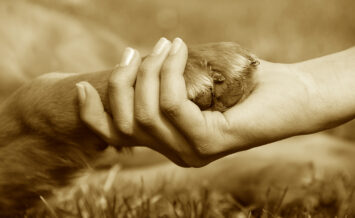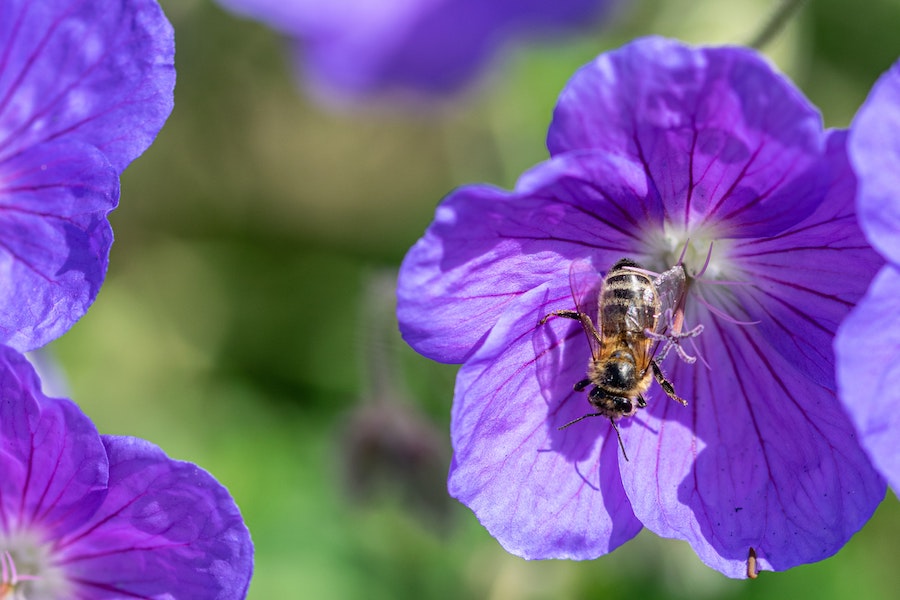National Insect Week: How to attract bees and butterflies to your garden
Wild pollinating insects like bees, butterflies and hoverflies have suffered drastic declines in recent decades, both in terms of numbers and biodiversity, according to Buglife, the Invertebrate Conservation Trust.
Many species have suffered such declines, the Trust warns they’re being pushed to extinction, due to a number of factors, including lack of space for wildlife in our countryside and in our towns and cities, and the use of pesticides.
So, there has never been a better time to fill your beds and borders with flowering plants and trees which are magnets to pollinating insects.
What size is your border?
If you have a narrow plot then use space vertically, perhaps with climbing shrubs – such as honeysuckle or passionflower – which bees and butterflies love.
In many gardens, borders are too narrow and beds too small, but plants can be scaled up or down simply by increasing or decreasing the number of each plant you put in. Just bear in mind how quickly and how large your plants will grow, as before you know it, just one flowering shrub could have taken over the whole area.
If you have room, the minimum width for a border should be around one metre, in which to grow a dwarf shrub and some smaller perennials. Group three or five of the same plant together in a cluster, and choose those which are in 9cm or one litre pots, which will give them space to fill out.
If you are wanting a layered effect of plants in your border, you’ll need more space – a minimum of a 3m width and 1m depth, but ideally more.
Think of the colour

Soft pinks and mauves are easy on the eye
If you want deep pinks, blues and mauves, good combinations include sea holly (echinops), with echinacea and the light, airy Verbena bonariensis – which self-seeds prolifically – and all are a magnet for bees in summer.
Lavender, purple lupins, alliums and pink roses also combine well.
If you’re more of a hot colour type, preferring sizzling reds, bright yellows and burnt oranges, you may prefer rudbeckia and heleniums to brighten your border.
View this post on Instagram
When choosing your plants, opt for single-flowered types which are native, rather than hybrid and double-flowered varieties. And don’t forget shrubs which flower at different times of the year, such as the bright yellow mahonia, providing plenty of pollen for hungry bees in spring.
Front of the border
For an easy maintenance border, you can’t go wrong with cranesbill geraniums for both ground cover, colour and interest from insects. Geranium ‘Rozanne’ is a winner, with its open, mid-blue flowers, which go on from spring to autumn.

Cranesbill geraniums provide good ground cover and colour
Some catmint can be grown towards the front of the border, including including Nepeta x fassennii, which has an informal, sprawling habit, while heucheras provide excellent foliage contrast, ranging from deep purple to acid green. Their spikes of wispy flowers also attract bees.
If you want colour and insect interest into late summer, the ice plant, Sedum spectabile, provides a cool silver leaf and flowers in late summer and autumn.
Middle of the border

Salvia nemorosa ‘Caradonna’ provides a good upright specimen
There are so many mid-height plants to place in the middle of a border, from the lollipop-shaped alliums which can be dotted through a scheme, to rudbeckia, perennial salvia, sea holly, roses and thistle-like cirsium. This section will probably offer you the most choice.
Back of the border

Buddleias attract butterflies
Fast-growing flowering shrubs – such as buddleias and ceanothus – will provide nectar for butterflies and bees, while tall foxgloves and delphiniums and eupatoriums will add colour and form behind lower-growing plants, as well as interest for pollinators.
Are there rules to follow to attract pollinators?
According to Buglife, the key things to remember are that native plants are best, as well as close relatives to native plants, so many cottage garden varieties will fit the bill.
Herbs are also good – lavender, rosemary, marjoram, chives. Provide a range of plants that will supply nectar and pollen throughout the year, from early spring to late autumn.

Bees pollinate apple blossom
Don’t forget trees, if you have room. In the spring, pollinators will gather on the blossom of apples, pears, cherries, hawthorn and blackthorn.
Plants with different shaped flowers will provide a range of resources for different types of pollinating insects – some bumblebees favour deep flowers, which they can access with their long tongues, others require more shallow flowers, or blooms with big ‘landing pads’ like ox-eye daisies.
National Insect Week runs from June 22-28. For more information visit nationalinsectweek.co.uk.
The Press Association
Latest posts by The Press Association (see all)
- Test your knowledge with our penguin-themed quiz - April 24, 2025
- Prince Louis shows off missing front teeth in new photo to mark seventh birthday - April 23, 2025
- Why does hearing get worse as we get older? - April 23, 2025
- Top scented plants for your garden, from a Kew expert - April 22, 2025
- How to build digital confidence over 60 - April 22, 2025



















